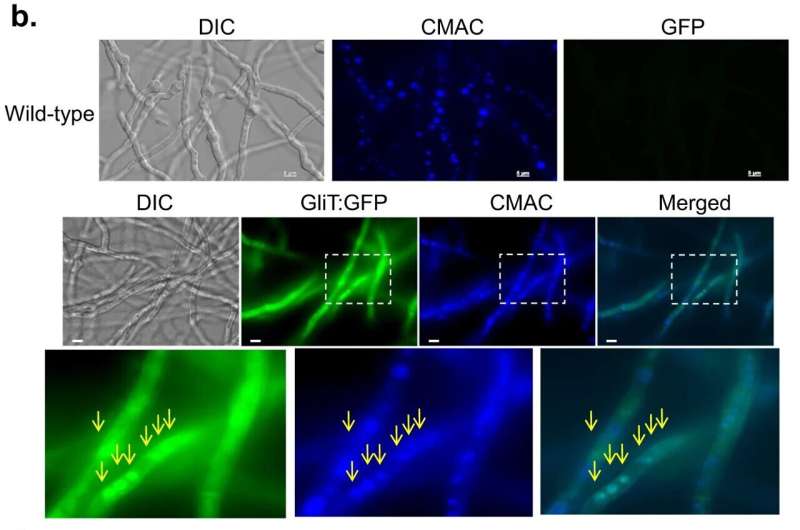This article has been reviewed according to Science X's editorial process and policies. Editors have highlighted the following attributes while ensuring the content's credibility:
fact-checked
peer-reviewed publication
trusted source
proofread
Unlocking the secrets of disease-causing fungus Aspergillus fumigatus

An international team of researchers, led by Professor Gustavo Goldman of the University of São Paulo and Maynooth University's Dr. Özgür Bayram, has unveiled ground-breaking findings on Aspergillus fumigatus, which can cause deadly disease in humans.
The saprophytic fungus is notorious for causing a spectrum of human diseases, known collectively as aspergillosis, in individuals undergoing cancer treatments and organ transplants as well as those with cystic fibrosis and chronic obstructive pulmonary disease.
The human pathogen is at the forefront of the World Health Organization's priority list, ranking as the most significant among health-threatening fungal pathogens.
The study, published in Nature Communications, sheds light on the intricate mechanisms underlying the virulence of Aspergillus fumigatus, specifically focusing on the crucial role of mycotoxin gliotoxin production. Gliotoxin helps this fungus to kill human immune cells including macrophages and neutrophiles.
Aspergillus fumigatus relies on a delicate balance in regulating gliotoxin production to prevent excess and mitigate toxicity to the fungus itself. The research team, led by Prof Goldman and Dr. Bayram, identified the pivotal roles played by GliT oxidoreductase and GtmA methyltransferase in the self-protection mechanism of gliotoxin. Both enzymes were observed to be localized in the cytoplasm and vacuoles during gliotoxin production.
The study demonstrates the pivotal role of the Mitogen-Activated Protein kinase MpkA in both gliotoxin production and self-protection. MpkA was found to physically interact with GliT and GtmA, influencing their regulation and subsequent presence in vacuoles—an association not previously made or demonstrated in relation to gliotoxin production.
The researchers emphasize the significance of compartmentalization of cellular events and the orchestrated interplay of these key enzymes for the effective production of gliotoxin and the self-defense mechanism of the fungus.
"We have been collaborating with international research teams using our expertise on identification of protein complexes. Our collaboration with Professor Goldman has led to high impact research on revealing the pathogenic traits of human pathogen Aspergillus fumigatus," Dr. Bayram said.
"Our work not only unravels the complex interplay of molecular actors within Aspergillus fumigatus but also underscores the importance of understanding these mechanisms for potential therapeutic interventions against aspergillosis."
The findings contribute significantly to the understanding of fungal pathogenesis and open avenues for targeted approaches in combating diseases caused by Aspergillus fumigatus.
"The implications extend beyond mere discovery; there's potential for developing therapeutic approaches," Dr. Bayram said. "For instance, the newfound knowledge might lay the foundation for a treatment targeting aspergillus infections in patients. Such a breakthrough could have profound implications for individuals undergoing cancer treatments, organ transplants, those with cystic fibrosis, and those managing chronic obstructive pulmonary disease (COPD)."
More information: Patrícia Alves de Castro et al, Aspergillus fumigatus mitogen-activated protein kinase MpkA is involved in gliotoxin production and self-protection, Nature Communications (2024). DOI: 10.1038/s41467-023-44329-1
Journal information: Nature Communications
Provided by Maynooth University





















